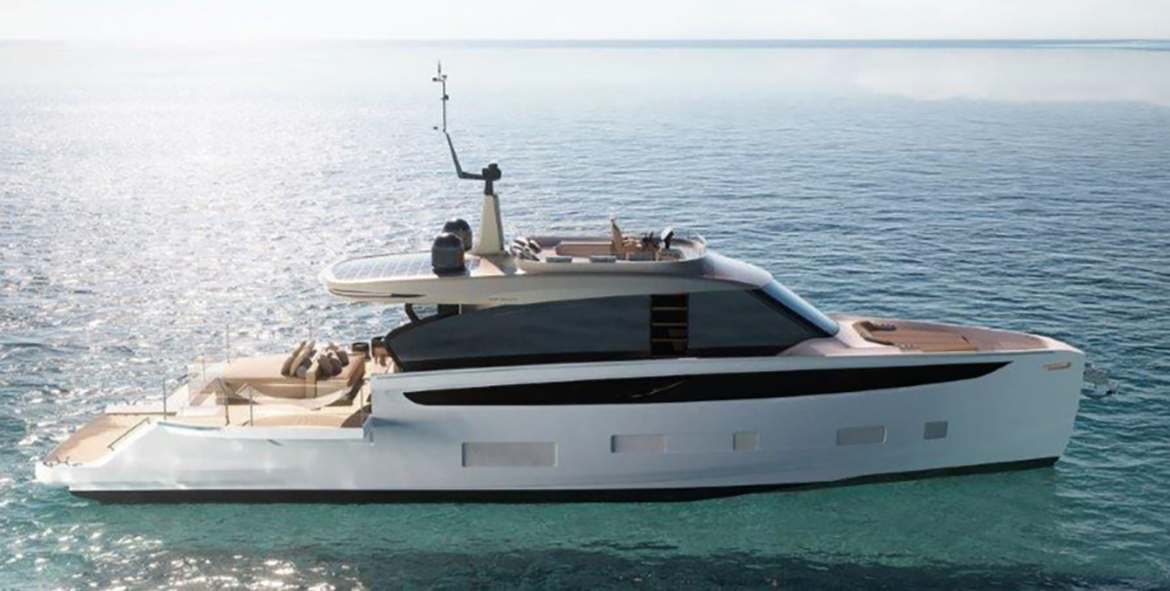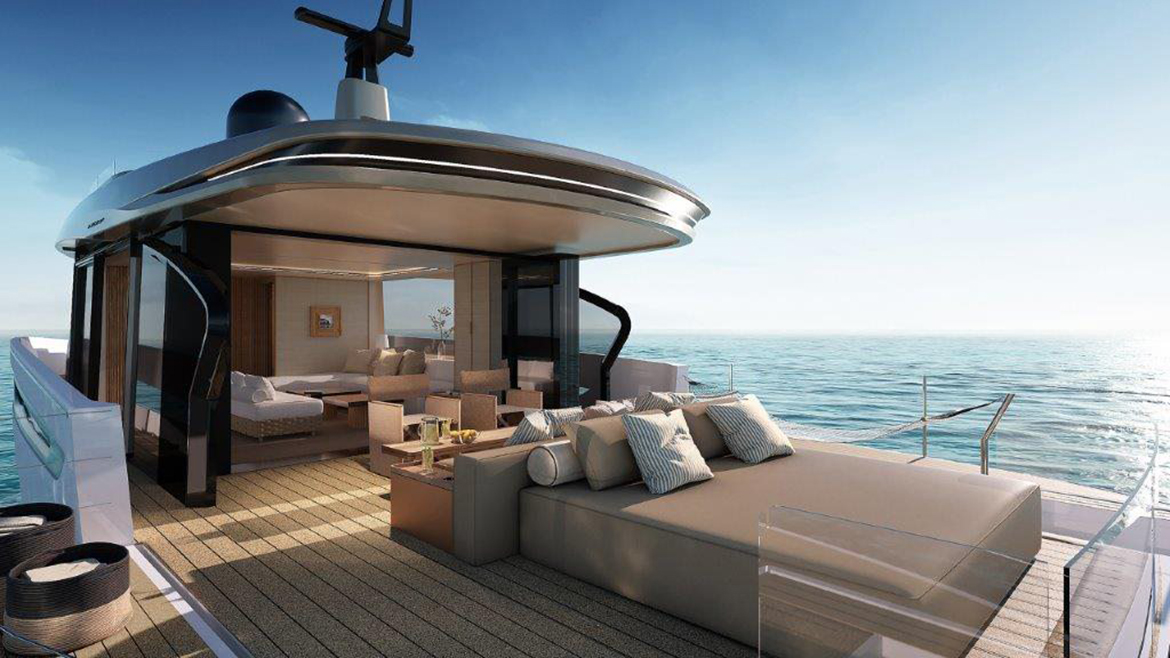Azimut’s most recent launches trace a path in which technological innovations aimed at reducing environmental impact are accompanied by design solutions conceived to break down the barriers between indoors and outdoors and bring the sea and nature closer together. The Seadeck Series embodies this ideal and does so by combining the two aspects that distinguish Azimut’s approach, technological innovation and stylistic and design creativity, the result of contaminations and inspirations that look to design and architecture.
To create the Seadeck Series, Azimut chose to collaborate with designers who shared the ideal of a return to nature: Alberto Mancini and Matteo Thun & Antonio Rodriguez. Alberto Mancini created an innovative concept, in which from the first sketches the exterior communicates naturally with the interior. To do this, he evolved his lines from taut and dynamic to sinuous and essential, tracing the infinite space of the Fun Island: “We wanted to create a boat in which the concept of openness and transparency was emphasised to the maximum and which also contained a radical change in its relationship with nature. Thus, by introducing the Fun Island, Seadeck is in fact a floating island that allows the owner to detach himself from his daily routine and live in total contact with the sea,” says Alberto Mancini.
Matteo Thun and Antonio Rodriguez translate the conscious philosophy that characterises their approach to architecture into the interior design of the Seadeck Series. The meeting with Azimut is an encounter born of shared values: the desire to work in subtraction in order to let the ‘heart’ of the rooms emerge, where it is easier to ‘feel good’, the redefinition of luxury in terms of well-being, and the choice of natural or recycled materials. This is the case of cork – ancient and Mediterranean, capable of spontaneous regeneration – which takes the place of teak. “We prefer to talk about awareness rather than sustainability,” comment Matteo Thun and Antonio Rodriguez. “A philosophy that determines our way of doing architecture. We try to work by subtraction, because reduction means durability, both technical and aesthetic. And a boat must last over time and be beautiful forever”.













